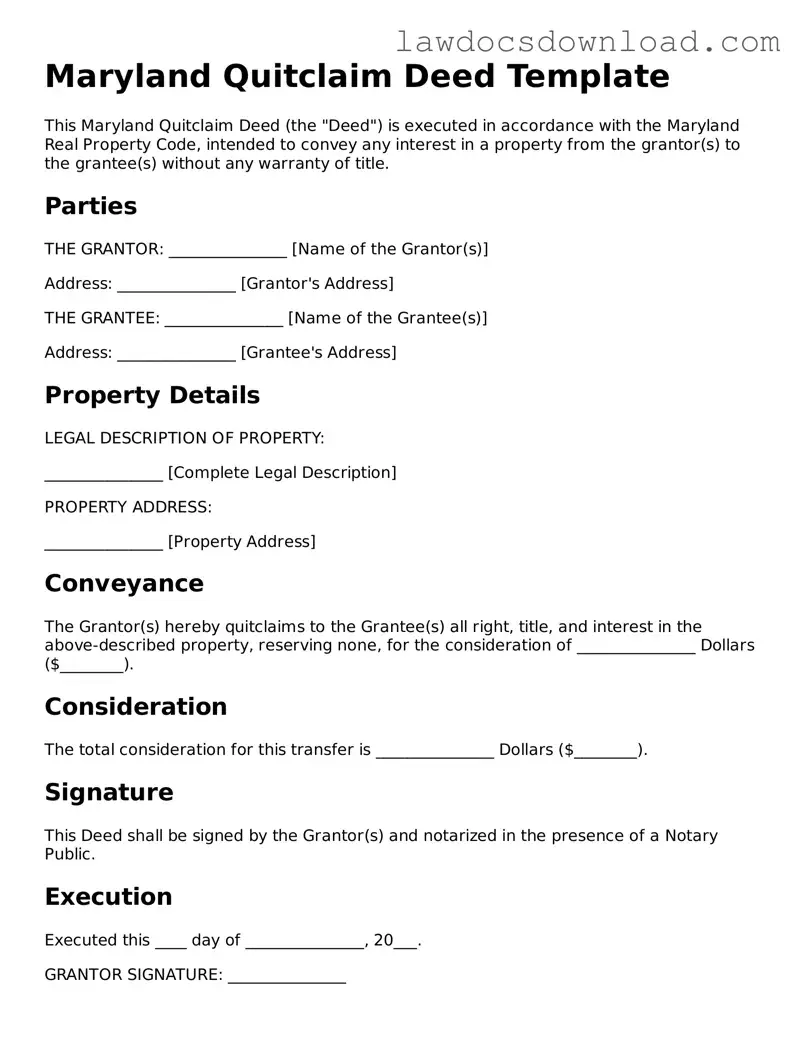Maryland Quitclaim Deed Template
This Maryland Quitclaim Deed (the "Deed") is executed in accordance with the Maryland Real Property Code, intended to convey any interest in a property from the grantor(s) to the grantee(s) without any warranty of title.
Parties
THE GRANTOR: _______________ [Name of the Grantor(s)]
Address: _______________ [Grantor's Address]
THE GRANTEE: _______________ [Name of the Grantee(s)]
Address: _______________ [Grantee's Address]
Property Details
LEGAL DESCRIPTION OF PROPERTY:
_______________ [Complete Legal Description]
PROPERTY ADDRESS:
_______________ [Property Address]
Conveyance
The Grantor(s) hereby quitclaims to the Grantee(s) all right, title, and interest in the above-described property, reserving none, for the consideration of _______________ Dollars ($________).
Consideration
The total consideration for this transfer is _______________ Dollars ($________).
Signature
This Deed shall be signed by the Grantor(s) and notarized in the presence of a Notary Public.
Execution
Executed this ____ day of _______________, 20___.
GRANTOR SIGNATURE: _______________
Printed Name: _______________
Notarization
This document was acknowledged before me on this ____ day of _______________, 20___, by _______________ [Name(s) of Grantor(s)].
__________________________________
Notary Public
State of Maryland
My commission expires: _______________.
Instructions:
- Fill in the blanks with the appropriate information for each party.
- Ensure the property's legal description is complete and accurate.
- Review the deed thoroughly before signing.
- The Grantor(s) must sign the Deed in the presence of a Notary Public.
- Record the Deed with the County Clerk's office in the county where the property is located to complete the transfer process.
